Nature’s remarkable ability to adapt and recover faces unprecedented challenges in Ontario’s parks and protected areas. Yet across our diverse landscapes – from the boreal forests of the north to the Carolinian woodlands of the south – innovative conservation strategies are creating new pathways for environmental resilience.
As climate change intensifies extreme weather events and shifts ecological patterns, Ontario Parks is pioneering adaptive management approaches that combine traditional knowledge with cutting-edge science. Through strategic habitat restoration, wildlife corridor preservation, and ecosystem monitoring, our parks are becoming living laboratories for climate resilience.
But environmental resilience isn’t just about responding to change – it’s about building stronger, more connected natural systems for the future. By engaging local communities, implementing nature-based solutions, and fostering biodiversity, Ontario’s parks are demonstrating how protected areas can serve as both sanctuaries for wildlife and models for sustainable ecosystem management.
Whether you’re a casual visitor or dedicated naturalist, understanding environmental resilience helps us all play a role in preserving these precious spaces. As we face an uncertain climate future, Ontario’s parks stand as beacons of hope, showing how proactive conservation and community engagement can help nature thrive in changing times.
Nature’s Warning Signs: Climate Impacts in Ontario Parks
Changing Landscapes
Take a walk through any Ontario park today, and you might notice some striking changes from just a decade ago. Our beloved shorelines are gradually reshaping themselves, with some popular beaches becoming narrower and steeper. At Wasaga Beach, for instance, visitors can spot visible signs of erosion along the once-gentle slopes, while at Point Pelee, the southernmost tip continues its dance with Lake Erie’s waters.
The vegetation tells its own story of adaptation. Species that once thrived in certain areas are slowly giving way to newcomers better suited to changing conditions. Maple trees are inching northward, while some cold-loving plants retreat to higher elevations. In Algonquin Park, observant hikers might notice southern species like red oak becoming more common in areas once dominated by white spruce.
These changes aren’t just affecting the scenery – they’re reshaping entire ecosystems. Wetlands are particularly sensitive, with some seasonal ponds drying up earlier in the year, affecting the breeding patterns of frogs and salamanders. Yet nature shows remarkable resilience, as new mini-ecosystems emerge in response to these shifts, creating fresh opportunities for adaptable species.
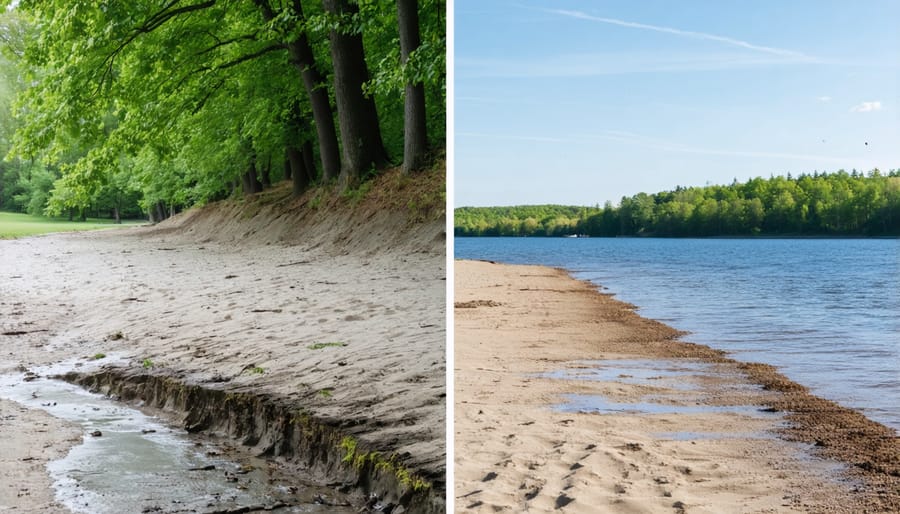
Wildlife Adaptation
Ontario’s wildlife is showing remarkable adaptability in the face of environmental changes. We’re seeing fascinating shifts in animal behaviors and migration patterns across the province. Black bears, for instance, are adjusting their hibernation schedules, sometimes emerging from their dens earlier in response to warmer winter temperatures.
White-tailed deer are expanding their range northward, while moose populations are gradually moving to cooler regions. Bird species like the American Robin are now frequently overwintering in southern Ontario instead of migrating south, taking advantage of milder winters and increased food availability.
Perhaps most impressively, smaller creatures are also proving their resilience. Beavers are building more elaborate dams to manage changing water levels, while some amphibians are breeding earlier in the season. Even monarch butterflies are adjusting their migration routes through Ontario to adapt to shifting weather patterns.
These changes remind us that while our wildlife friends are incredibly adaptable, they still need our support through conservation efforts and habitat protection to ensure their continued survival in our changing environment.
Building Stronger Parks: Current Resilience Strategies
Ecosystem Protection Programs
Ontario’s parks and protected areas are at the forefront of innovative conservation efforts in Ontario, implementing numerous programs to safeguard our natural heritage. From the towering pines of Algonquin to the wetlands of Point Pelee, each ecosystem receives specialized attention and protection strategies.
One of the most successful initiatives has been the Species at Risk Protection Program, which has helped restore populations of threatened wildlife like the Blanding’s turtle and eastern wolf. Park naturalists work tirelessly to monitor these species and maintain their habitats, often inviting visitors to participate in citizen science projects.
Did you know that many parks now feature designated “restoration zones” where native plants are being reintroduced? These areas serve as living laboratories, showing visitors firsthand how ecosystem recovery works. You can often join guided walks to learn about these restoration projects and even volunteer in seasonal planting events.
Habitat connectivity is another crucial focus, with wildlife corridors being established between protected areas. These green corridors allow animals to move freely and maintain healthy genetic diversity in their populations. Next time you’re hiking, keep an eye out for signs marking these special pathways – they’re like nature’s highways!
To support these initiatives, visitors can participate in various volunteer programs, from invasive species removal to habitat monitoring. Every small action counts in building environmental resilience for future generations.
Infrastructure Improvements
Ontario Parks is taking bold steps to strengthen our natural spaces against climate challenges through smart infrastructure improvements. Throughout the province, you’ll notice new climate-resistant facilities designed to withstand extreme weather while maintaining the rustic charm we all love.
Many campgrounds now feature elevated platforms and improved drainage systems to prevent flooding during heavy rains. Popular trails have been modified with sustainable materials and strategic routing to reduce erosion and protect sensitive ecosystems. For instance, in areas prone to washouts, you’ll find new boardwalks and elevated pathways that keep your feet dry while preserving the surrounding landscape.
Visitor centers are being upgraded with energy-efficient systems and weather-resistant materials. Several parks now boast solar panels and rainwater collection systems, showing how we can blend modern sustainability with natural preservation. These improvements aren’t just about durability – they’re designed to enhance your experience while treading lightly on the environment.
A personal favorite improvement is the new eco-friendly comfort stations. These innovative facilities use less water and energy while providing all the amenities you need for a comfortable stay. Plus, many trails now include rest areas with weather shelters, perfect for those unexpected summer showers or as shade during hot days.
Remember, while exploring these upgraded facilities, you might notice ongoing work as we continue to adapt our parks for the future. These improvements help ensure that future generations can enjoy Ontario’s natural wonders just as we do today.
Green Technology Integration
Ontario’s provincial parks are leading the way with innovative sustainable technologies in parks that enhance both visitor experience and environmental protection. You’ll find solar panels dotting the roofs of visitor centers and comfort stations, particularly in remote locations like Killarney and Algonquin Park, where they reduce reliance on diesel generators.
Here’s something cool I discovered during my last visit to Pinery Provincial Park: they’ve installed smart water stations that not only help visitors refill their bottles but also track the number of plastic containers saved from landfills. Many parks now use LED lighting systems with motion sensors, cutting energy usage by up to 75% compared to traditional bulbs.
Electric vehicle charging stations are popping up at more locations each year, making it easier for eco-conscious travelers to explore Ontario’s wilderness. Some parks have even introduced innovative waste management systems, like solar-powered compacting bins that alert staff when they’re full, reducing unnecessary collection trips.
My favorite green initiative has to be the new “smart trail” technology being tested in several parks. These solar-powered information kiosks provide real-time updates about trail conditions and wildlife sightings while running entirely on renewable energy. It’s amazing to see how these parks balance modern convenience with environmental responsibility!

Visitor’s Role in Park Resilience
Eco-Friendly Camping Practices
When visiting Ontario’s beautiful parks, following eco-friendly camping practices is essential for preserving these natural treasures for future generations. Start by planning ahead and packing reusable containers, water bottles, and eco-friendly toiletries to minimize waste. Choose biodegradable soap and keep it (along with any washing) at least 30 meters away from water sources.
Remember the classic camper’s motto: “Pack it in, pack it out.” This means taking all your garbage with you, including food scraps that might attract wildlife. Speaking of wildlife, always maintain a respectful distance and never feed them – it disrupts their natural behavior and can make them dependent on human food.
Stick to designated trails and campsites to prevent soil erosion and protect sensitive vegetation. When collecting firewood, gather only dead and fallen branches from the ground, and make sure to purchase local firewood to prevent the spread of invasive species.
For bathroom breaks in the backcountry, dig a small hole at least 15 centimeters deep and 70 meters from any water source. Cover it completely when finished and pack out any toilet paper in a sealed bag.
These simple practices help maintain the delicate balance of our park ecosystems while ensuring everyone can enjoy pristine natural experiences for years to come. Remember, every small action counts toward protecting our precious wilderness areas.
Supporting Conservation Efforts
Getting involved in park preservation is easier than you might think! Ontario’s natural spaces thrive when visitors like you participate in conservation initiatives. One of the most popular ways to help is joining the “Adopt-a-Trail” program, where you can become a steward of your favorite hiking path by helping maintain its condition and reporting any concerns.
For the citizen scientists among us, consider participating in seasonal wildlife counts. These fun events help park staff track animal populations and understand changing patterns in our ecosystems. Bring your camera and field guide – you might spot something remarkable!
Many parks offer volunteer programs during peak seasons, where you can assist with everything from tree planting to invasive species removal. It’s a fantastic way to meet like-minded nature enthusiasts while making a real difference in preserving our wilderness areas.
Even simple actions during your visit contribute to conservation. Use designated trails, pack out what you pack in, and keep a safe distance from wildlife. Consider purchasing an annual park pass – the proceeds directly support maintenance and conservation programs.
For those who want to go the extra mile, join local “Friends of the Park” groups. These community organizations arrange clean-up events, educational programs, and fundraising initiatives. They’re always looking for passionate individuals to help protect our natural heritage for future generations.
Remember, every small action counts in preserving Ontario’s stunning landscapes!
Future-Proofing Our Natural Heritage
Innovative Conservation Projects
Ontario’s parks and conservation areas are pioneering innovative approaches to protect our natural heritage for future generations. One exciting initiative is the “Corridors for Life” project, which creates protected wildlife passages connecting fragmented habitats across the province. These green corridors allow animals to move safely between protected areas, helping them adapt to changing climate conditions.
In Algonquin Park, researchers are using cutting-edge technology to monitor and protect endangered species. Motion-sensitive cameras and GPS tracking devices help scientists understand animal movement patterns and make informed conservation decisions. The data collected is already showing promising results in protecting species like the eastern wolf and Blanding’s turtle.
Local communities are getting involved too! The “Citizen Scientist” program invites visitors to contribute to conservation efforts by reporting wildlife sightings through a user-friendly mobile app. This crowd-sourced data helps park managers track ecosystem changes and respond quickly to environmental challenges.
Looking ahead, Ontario Parks is rolling out new sustainable infrastructure projects. Solar-powered visitor centers, water conservation systems, and electric vehicle charging stations are being installed across various parks. There’s also an exciting pilot project using indigenous knowledge to restore natural habitats – combining traditional wisdom with modern conservation techniques.
Want to help? Many parks offer volunteer programs where you can participate in tree planting, species monitoring, or habitat restoration. It’s a wonderful way to contribute while learning about our natural environment firsthand!
Community Engagement
Ontario’s parks are increasingly turning to local communities as vital partners in building environmental resilience. Through community-driven conservation initiatives, residents are becoming active stewards of their nearby parklands, contributing valuable local knowledge and hands-on support.
Take the “Park Champions” program, for instance, where local volunteers help monitor wildlife populations, maintain trails, and participate in habitat restoration projects. These dedicated community members often spot early warning signs of environmental changes that might otherwise go unnoticed.
Indigenous communities play an especially crucial role, sharing traditional ecological knowledge that has sustained these lands for generations. Their insights into forest management, wildlife patterns, and sustainable practices are helping shape more effective conservation strategies.
Local schools are getting involved too, with students participating in citizen science projects and environmental education programs. These young environmental stewards are learning firsthand about climate change impacts while contributing to real scientific research.
Community engagement extends to local businesses as well, with many adopting “park-friendly” practices and supporting conservation efforts through fundraising and awareness campaigns. Some tour operators now include educational components about environmental resilience in their programs, helping spread the message to visitors.
Want to get involved? Most parks offer volunteer opportunities and community events throughout the year. Check your local park’s website or visitor center for upcoming activities where you can make a difference.
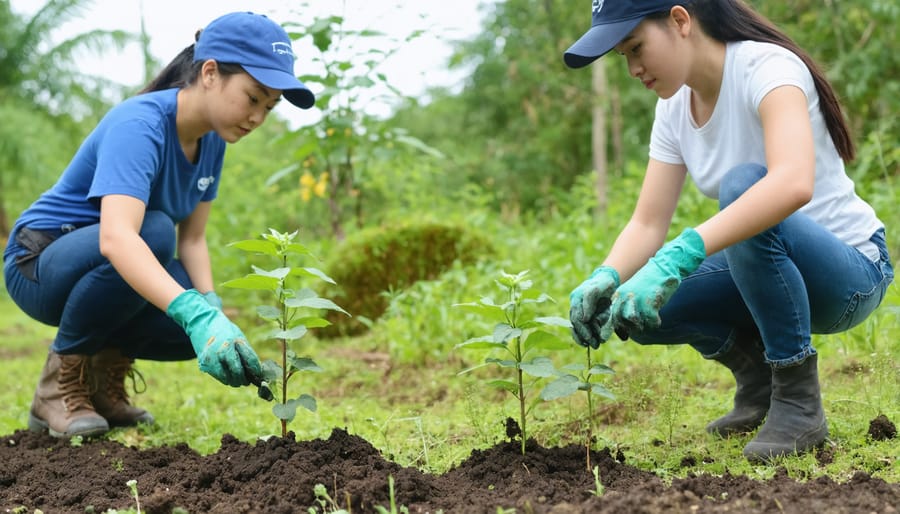
Together, we can ensure that Ontario’s natural treasures continue to thrive for generations to come. Every visitor plays a crucial role in protecting these precious ecosystems – whether it’s by staying on marked trails, properly disposing of waste, or participating in citizen science programs. The increasing success of our environmental resilience initiatives shows that when we work together, positive change is possible. As you plan your next park visit, remember that even small actions contribute to the bigger picture of conservation. By embracing sustainable practices and sharing our love for nature with others, we’re not just preserving parks – we’re building a more resilient future for Ontario’s wilderness. Your adventure in our parks is more than just a getaway; it’s part of an ongoing story of environmental stewardship and community dedication.



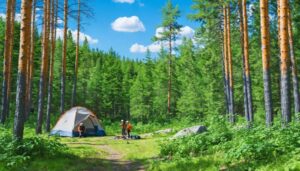

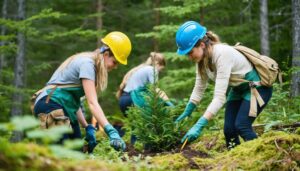


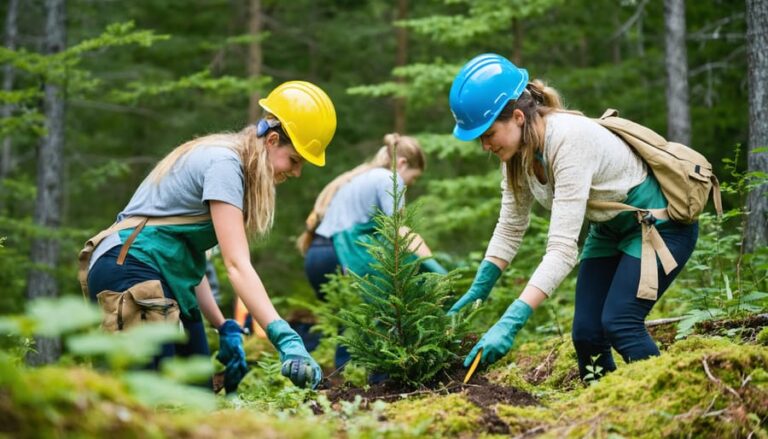
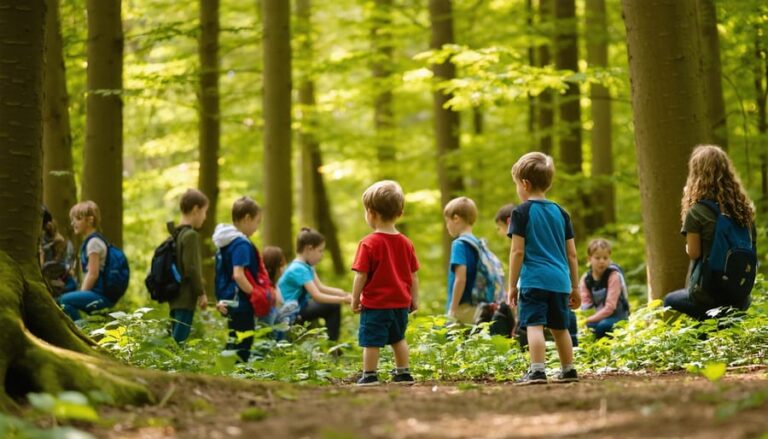
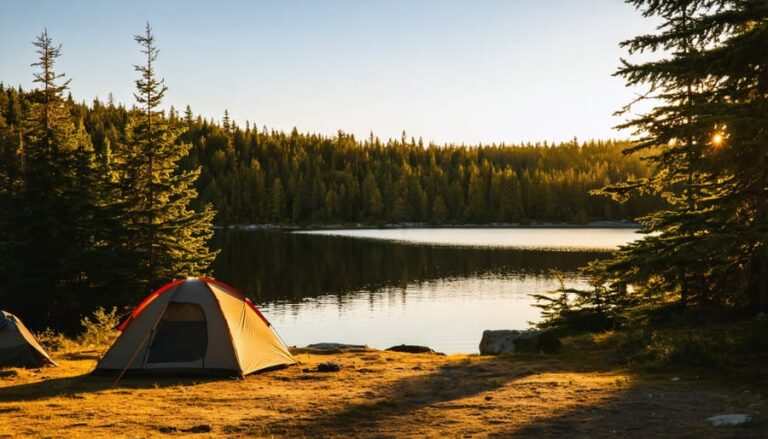
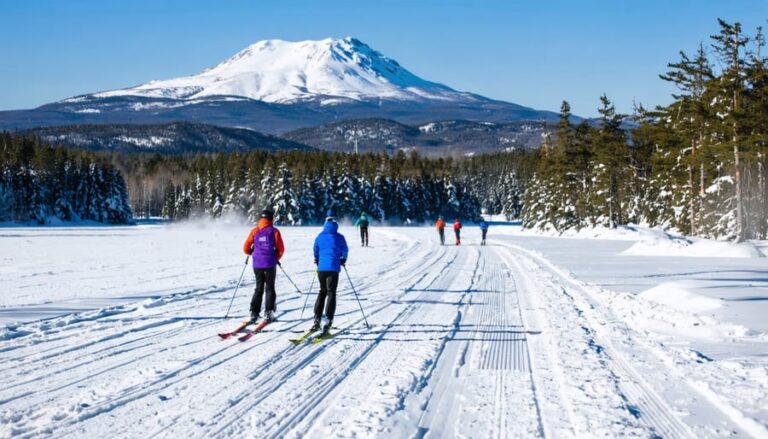

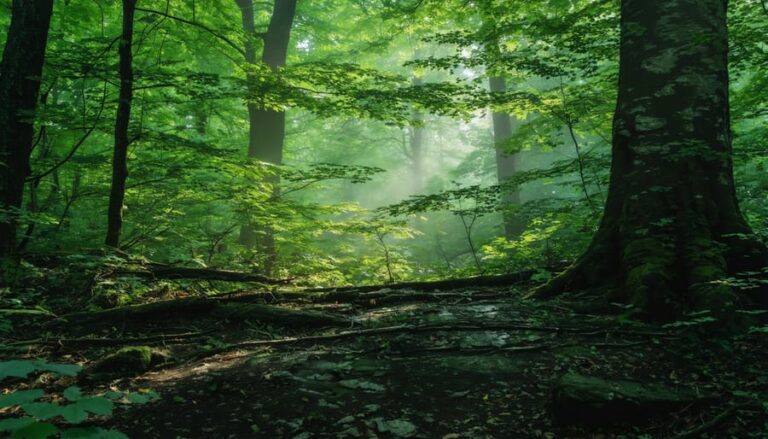
+ There are no comments
Add yours